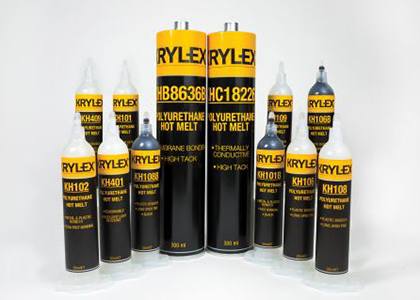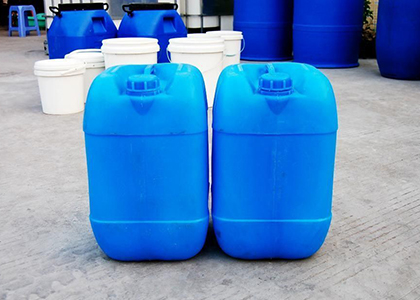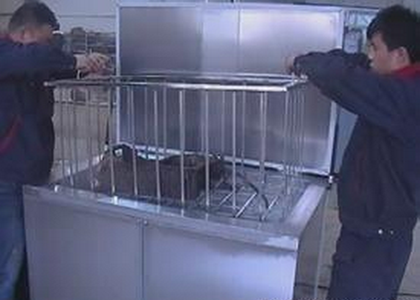First, the difference between product source and composition
Kerosene is a petroleum that is cut from the 110-330 ° C fraction through an atmospheric distillation column of a refinery. The physical and chemical properties of the crude oil vary depending on the origin of the crude oil. Kerosene is classified into aviation, power, solvent, lamp, fuel, and kerosene by usage. Kerosene varies greatly depending on the variety and origin. It generally contains 28% to 75% of alkanes, 10% to 15% of aromatics, 1% to 6% of unsaturated hydrocarbons, 10% to 25% of cycloalkanes, and carbon atoms. The number is 9 to 16. In addition, there are a small amount of impurities such as sulfides (thiols), gums, and the like. The composition of kerosene is complicated, and kerosene producers rarely carry out secondary precision treatment of kerosene. Therefore, when used as a cleaning agent, it is felt that the appearance, odor, safety performance and the like of the kerosene product are poor in many aspects.
The main component of the hydrocarbon cleaning agent is an alkane. It is a narrow fractionation which is more suitable for cleaning by 150~190 °C volatility specially cut by petroleum refinery rectification tower, and then subjected to hydrogenation process, desulfurization, dearomatization, decontamination. Refined treatment such as decolorization to obtain a saturated hydrocarbon, and further compounded with a stabilizer, an antioxidant, a detergent builder, and prepared into a hydrocarbon cleaning agent. Therefore, the hydrocarbon cleaning agent has stable performance, small odor, thorough volatilization, and is suitable for precise cleaning with high requirements, and high distillation recovery rate. However, some adulterated hydrocarbon cleaning agents are of low quality, mainly because of the lack of quality in the fraction cutting and subsequent refining processes, so the composition is complex and contains many cyclic hydrocarbons and multi-branched, long-chain branched alkanes. This hydrocarbon cleaning agent is inferior to other hydrocarbon cleaning agents.
But in general, from the composition analysis, many physical and chemical indicators and performance of hydrocarbon cleaning agents are incomparable to kerosene.
Second, the difference between physical and chemical indicators
2.1 Appearance
Solvent-based cleaners are generally colorless, transparent liquids. Normally, hydrocarbon cleaners are not allowed to have color and are colorless and transparent liquids.
The main use of kerosene is as a fuel. It has color. Because it does not remove colloidal and condensed aromatic hydrocarbon impurities, the appearance of kerosene is light yellow or yellowish brown, and the color is deepened with the storage time.
2.2 smell
Hydrocarbon solvents have a lighter odor, but if they contain thiol hydrogen sulfide, they emit a special odor. The smell of solvent-based cleaners is also an indicator of the purity of a product.
Because kerosene is not refined, impurities such as mercaptans and hydrogen sulfide are not removed. Therefore, during the cleaning process, the entire production workshop will be filled with special odor. The hydrocarbon cleaning agent has been removed from the impurities, so there is only a slight odor and no odor of mercaptan. Hydrocarbon cleaners are friendly to cleaning personnel when used on site.
2.3 Density
The density of the hydrocarbon cleaning agent is substantially comparable to that of kerosene, but is relatively stable and generally remains in the range of (0.75 ± 0.02) g/ml. Kerosene is different from manufacturer to manufacturer and has a large density difference. The density ranges from 0.7 to 0.85.
2.5 Evaporation speed
Solvent-based cleaners evaporate at different levels. The standard for measuring the rate at which solvent-based cleaners evaporate is the rate of evaporation. The faster the evaporation rate, the shorter the time for the cleaning agent to automatically dry from the surface of the workpiece, and the greater the non-production consumption during normal use; on the contrary, the slower the evaporation rate, the smaller the non-production consumption, and the cleaning agent automatically from the surface of the workpiece. The longer the drying time, the normal workpiece drying time and production interval. When selecting a solvent-based cleaning agent, the manufacturer must consider the volatilization of the cleaning agent to determine whether it is suitable for the production process. The steam evaporation rate of the hydrocarbon cleaning agent is similar to that of kerosene, the hydrocarbon cleaning agent is 0.3 to 0.35 (cm 2 · sec), and the kerosene is 0.25 to 0.35 (cm 2 · sec).
2.6 Toxicity
Since kerosene contains a large amount of aromatic hydrocarbons (10 to 15%), sulfides (thiols), nitrides, colloids, etc., cause inhalation poisoning. Since the hydrocarbon cleaning agent is a refined dearomatized solvent, it has no harmful substances such as aromatic hydrocarbons, sulfides (thiols), nitrides, and colloids, and thus has little damage to the human body. According to the toxicity test, the hydrocarbon cleaning agent is a non-toxic product (according to the disinfection technical specification (2002 edition) acute toxicity grading standard).
2.7 Environmental performance
Hydrocarbon cleaning agent has good environmental performance. Because the main component is high-purity refined dearomatized solvent, it has very little damage to human body, and it does not belong to ODS cleaning products, and its environmental impact is very small.
The kerosene itself is an unrefined petroleum extract. Many impurities are not removed. It contains too much aromatic hydrocarbons, cycloalkanes, mercaptans, and nitrogen-containing compounds. These components have great impact on operators and the environment. In particular, the aromatic hydrocarbons contained in the product will cause a certain impact on human health.
2.8 Cost comparison
The hydrocarbon cleaning agent has high manufacturing cost and higher unit cost than kerosene, but the cleaning ability of the hydrocarbon cleaning agent itself is better than that of kerosene, and the product quality is superior to kerosene. Considering the safety of people, the safety of enterprises and the responsibility to society, the comprehensive use cost of hydrocarbon cleaning agents is basically equivalent to kerosene. In addition, by using the vacuum distillation recovery technology, the hydrocarbon cleaning agent can be distilled and recycled for secondary use, which greatly reduces the use cost of the hydrocarbon cleaning agent.
2.9 Application Comparison
Kerosene is a traditional degreasing agent and has a large number of applications in many industries, such as metallurgy, electric power, mechanical processing, equipment manufacturing, automobile manufacturing, general parts production and processing, petrochemical, steel manufacturing, and railways. In the production and equipment maintenance of these industries, kerosene has been widely used for its excellent degreasing ability. However, the object of cleaning kerosene is the degreasing cleaning with low knowledge for cleaning. For the demanding precision cleaning, kerosene is difficult to meet the requirements due to its own shortcomings.
In addition to the above-mentioned industrial fields, hydrocarbon cleaning agents can replace kerosene, industrial parts cleaning and telecommunications, aviation and military in the fields of electronic products, information and communication, instrumentation, optical equipment, aerospace, transportation, raw material production, etc. Excellent performance in the cleaning of mechanical equipment in other industries. These industries have relatively high cleaning requirements, and have high requirements for cleanliness after cleaning, corrosion of materials, and environmental hazards. It is difficult to meet kerosene.
2.10 Cleaning objects
Kerosene is mainly used for cleaning oil stains on various non-ferrous metals, steel and plastics. Hydrocarbon cleaning agents have a wide range of applications and are used in various industries, in addition to cleaning various non-ferrous metals and steel. Excellent cleaning effect in cleaning acrylic (plexiglass), phenolic resin, fluororubber, etc.
2.11 Cleaning method
Kerosene can be used for immersion cleaning, brushing, spray cleaning, ultrasonic cleaning, and pressure spray cleaning. However, when applying pressure spray washing and spray cleaning, the degree of atomization of kerosene is high, and a large amount of volatilization occurs. Since the flash point of kerosene is low, special attention should be paid to safety to prevent fire.
In addition to immersion cleaning, brushing, spray cleaning, ultrasonic cleaning, and pressure cleaning, the hydrocarbon cleaning agent can also be vacuum cleaned and applied to the demanding precision cleaning industry. In addition, due to the higher flash point of the hydrocarbon cleaning agent, it is safer than kerosene.



